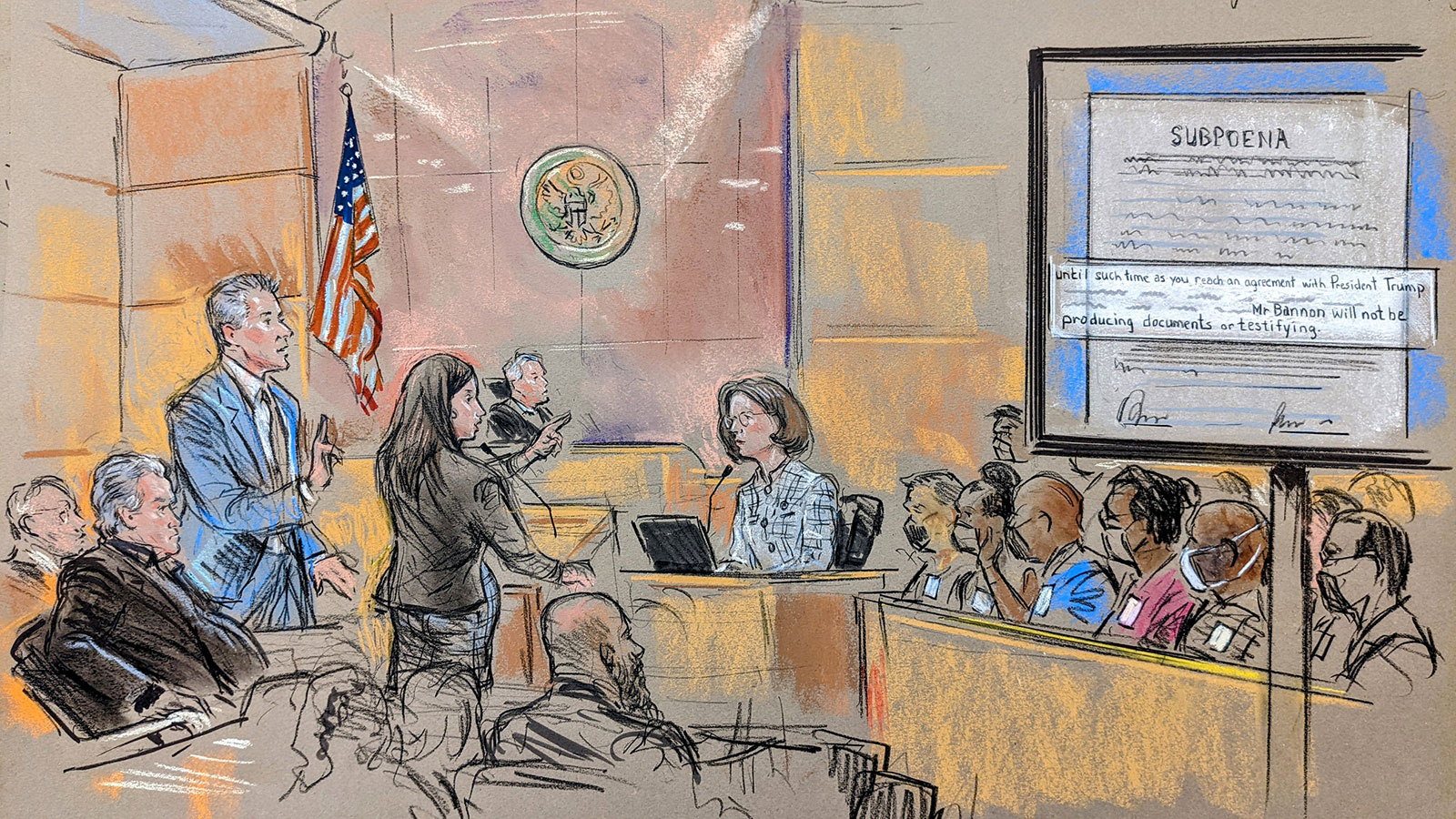

Prosecutors rested their case against Steve Bannon yesterday, having kept to an approach to keep things simple and straightforward for the jury.
To present their evidence that Bannon, the ex-adviser to former President Donald Trump, was in contempt of Congress for not complying with a subpoena in the House Jan. 6 investigation, the Justice Department put only two witnesses on the stand.
Through their questioning of House committee staffer Kristin Amerling, prosecutors walked the jury through the paper trail of documents communicating to Bannon that the October deadlines for him to produce documents and sit for testimony. Bannon’s team meanwhile grasped at what they could — including his recent offer to testify before the committee — to try to suggest that Bannon had reason to believe that the deadline wasn’t firm, while also hinting at supposed bias against him.
Here are four takeaways the third day of proceedings and the second day of testimony:
Paper trail boosts prosecutors’ case against Bannon
The pace of Wednesday’s testimony largely relied on the letters between the House select committee investigating the Jan. 6 insurrection and Bannon.
Several defenses that Bannon might try to put forward were undermined by the paper trail of documents the committee sent him regarding his subpoena and the prosecution was able to put those documents on display through its questioning of Amerling.
The documents showed that Bannon was warned that his noncompliance with the subpoena risked a criminal referral. They showed that the committee rejected his claims that Trump assertions of executive privilege precluded him from cooperating. And they showed that the committee reaffirmed the subpoena deadlines and lawmakers’ expectations that he comply by then.
Amerling was also questioned about the responses the committee received from Bannon’s attorney. She testified that Bannon never asked for the deadlines to be moved, nor did he give the committee reasons that in the committee’s view would help justify his lack of compliance, such as that he didn’t understand the directions of the subpoena.
Bannon’s team says committee gave him flexibility
After a series of rulings limiting his defenses, Bannon finally got a holding in his favor, with District Judge Carl Nichols on Wednesday giving his team the OK to admit his lawyer’s and Trump’s recent letters for the committee clearing him to testify. With the ruling, they also admitted a previously unreported letter committee Chairman Bennie Thompson sent last week responding to Bannon’s offer to testify for the committee.
The Bannon team has had very little to work with at this trial. So the ability to use the letters in their questioning of Amerling was a rare opportunity for them to expand Bannon’s defense — and allowed the topic of executive privilege to hang over the case more than the Justice Department had intended. Bannon’s team was seeking to use the correspondences to bolster the case that Bannon had reason to believe that the October return dates were not a hard deadline but rather flexible inflection points in the process of negotiating over Bannon’s cooperation.
In his question of Amerling, Corcoran pointed her specifically to Thompson’s indication that it would still host Bannon for testimony.
The Bannon team hopes that the jury sees that as evidence that, even when subpoenas have return dates, the process was an open-ended one and that Bannon had reason to believe that when he blew past the October deadlines, that his cooperation at later date would be an acceptable one to the committee. (The judge has instructed jurors that any future compliance by Bannon with the subpoena was not relevant to whether he was in default last year.)
Trial could conceivably sit with the jury Thursday
The Justice Department wrapped its case quickly on Wednesday with a short set of questions for its second witness, FBI agent Stephen Hart, who read public statements from Bannon that said he would stand with Donald Trump and links on his social media accounts to stories describing him as not complying with the committee, even after one subpoena deadline passed.
Now the question will be how many witnesses, if any, the defense team calls to help Bannon’s cause. If they call none — and Bannon doesn’t testify, the case could conceivably head to jury deliberations by the afternoon.
One defense strategy: Call out the Democrats
Wednesday’s proceedings kicked off with a discussion between the attorneys and judge about whether the case would be a political circus. Judge Carl Nichols said he would not let it become one.
Yet during defense attorney Evan Corcoran’s hours of questioning Amerling, he repeatedly probed her politics. The questions attempted to show the Washington, DC, jury she and the Democratic-leaning committee may have unfairly singled out Bannon among their thousands of witnesses.
Corcoran was able to ask Amerling, a two-decade Hill veteran, the parties of the lawmakers she worked for and about her political contributions. Her past attendance at a book club alongside a prosecutor on the case spun into a lively set of questions. But when Bannon’s attorneys shifted to questions about the larger political dynamics of the House and the committee’s actions, the judge largely blocked them from going there.
Read more takeaways here.

التعليقات